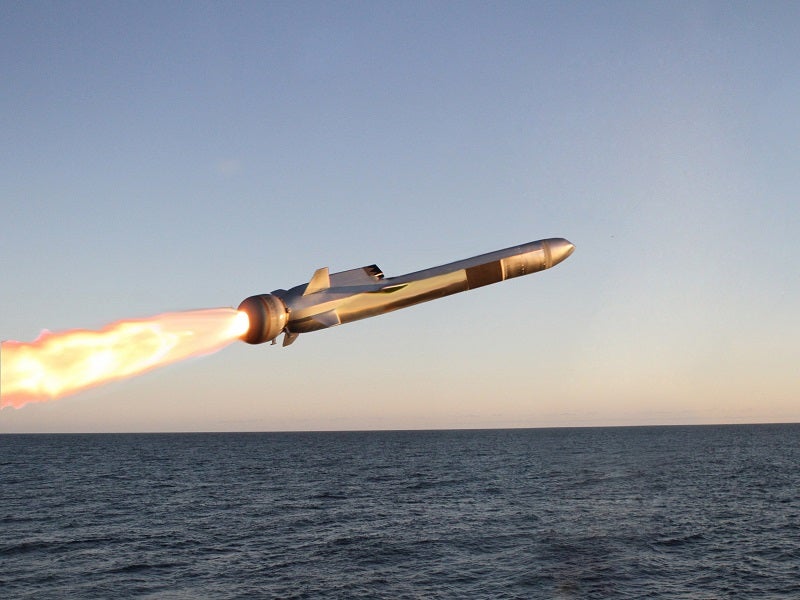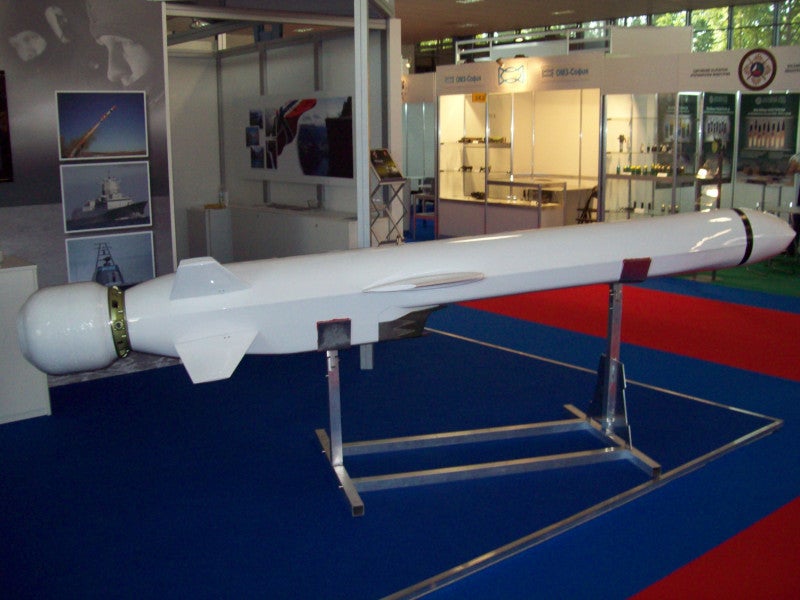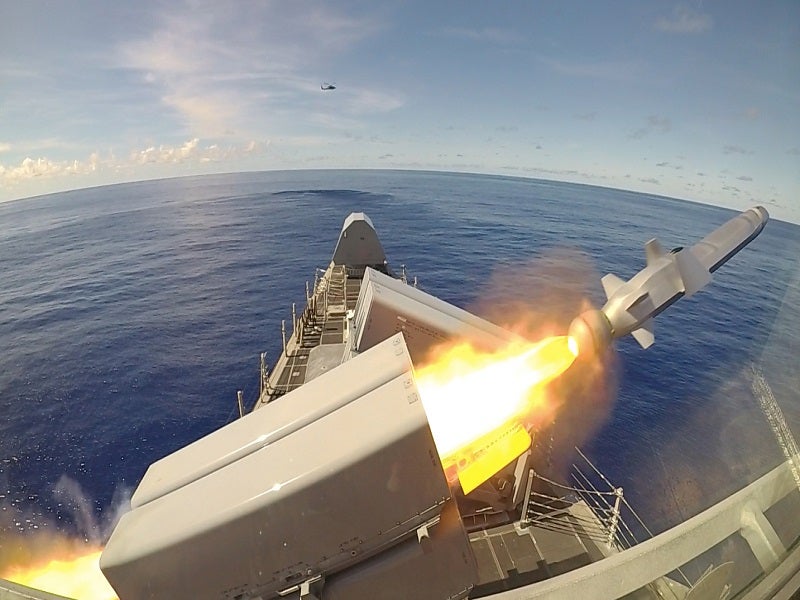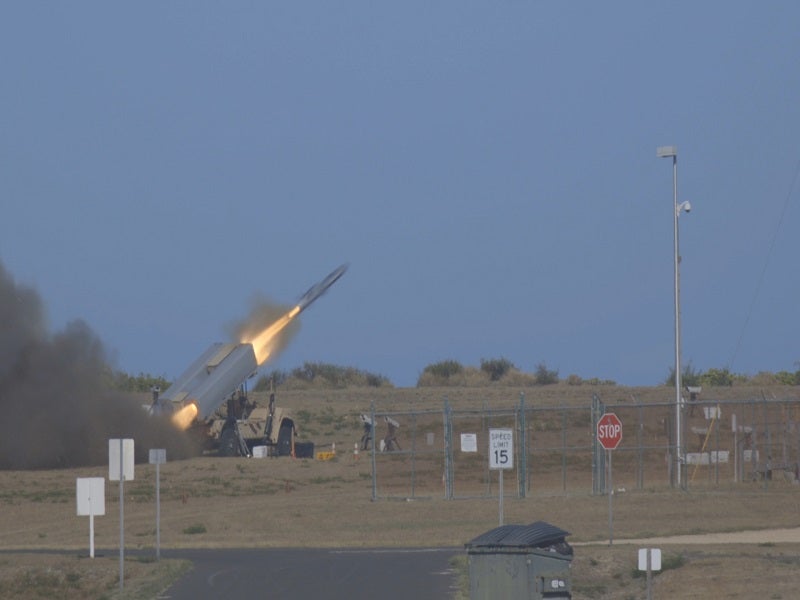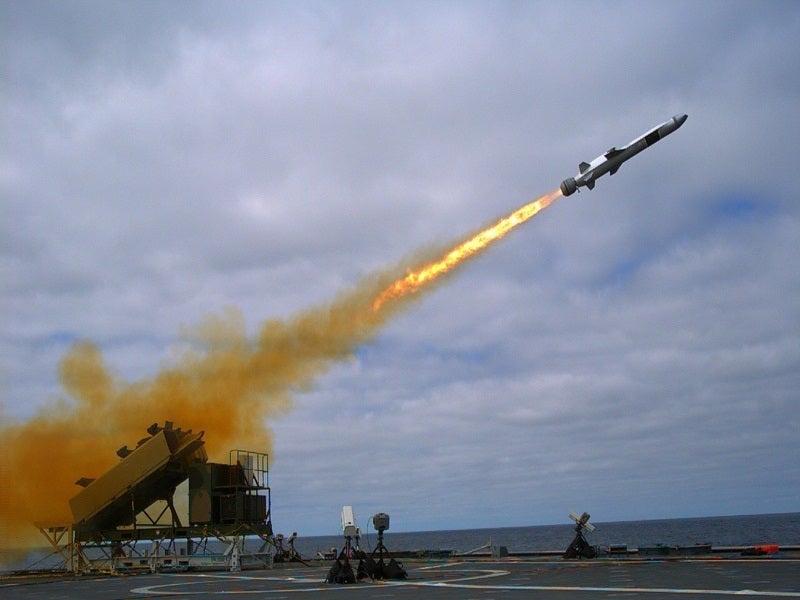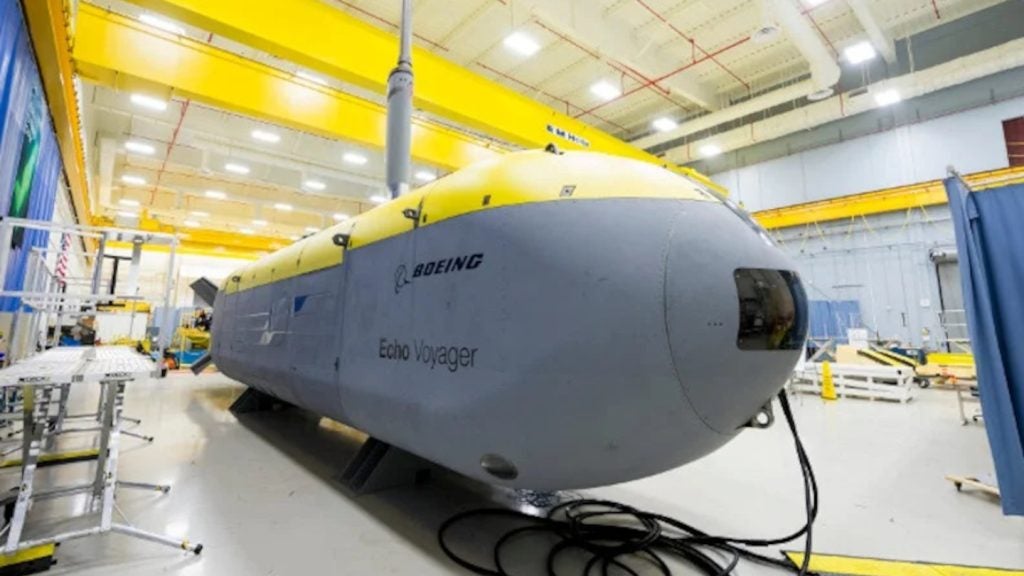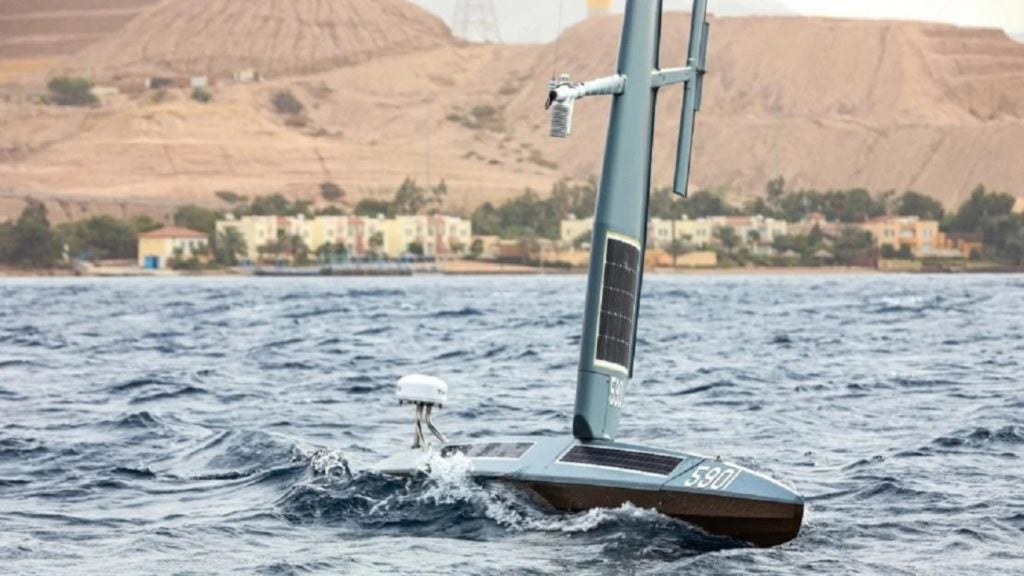The Naval Strike Missile (NSM) is a long-range, fifth-generation precision strike anti-ship/land attack cruise missile developed by Kongsberg Defence & Aerospace, an aerospace and defence company based in Norway.
The NSM is a successor to the Penguin anti-ship missile and is primarily designed to defeat heavily protected maritime targets in contested environments. It can also be deployed in a secondary role for land attacks.
The weapon system is either in service or has been selected by countries including Norway, the US, Germany, Poland, Latvia, the Netherlands, Australia, Canada, the UK, Malaysia, Romania and Spain.
The UK Royal Navy began the NSM upgrade work on the Type 23 frigate HMS Somerset in January 2023.
Orders and deliveries for the NSM
In June 2007, Kongsberg signed an Nkr2.7bn ($474m) contract with the Norwegian Defence Logistics Organisation (NDLO) for serial production of the NSM. The agreement also included the Nkr200m ($34.5m) transition contract.
The NSM was deployed on Norway’s Fridtjof Nansen-class frigates and Skjold-class missile fast patrol boats. In December 2010, the Polish Ministry of Defence placed an Nkr660m ($114m) contract with Kongsberg for the NSM and logistics equipment. It was an extension to the base contract signed for the NSM in December 2008.
The request for additional NSMs, bringing the total contract value to Nkr712m ($123m), was approved in December 2011.
Kongsberg received a contract from the Polish Ministry of National Defence to supply an NSM Coastal Defence System (CDS) in 2014.
In August 2016, Raytheon was awarded a contract by Kongsberg to manufacture NSM launchers in its production facility in Louisville, Kentucky, US.
Norway selected Germany as a strategic partner for new submarines in February 2017. The partnership covers common procurement of identical, new submarines and their management over their lifetime.
The industrial co-operation agreement was expanded to include the NSM and potential procurement of the NSMs for German vessels.
As a part of this agreement, a contract worth Nkr220m ($26.88m) for cooperation on the NSM was signed between Kongsberg and the Norwegian Defence Materiel Agency in June 2018. The contract was the first phase in a long-term Norwegian-German co-operation on missiles.
Kongsberg received a €124m ($153m) contract from the Royal Malaysian Navy in April 2018 to supply the NSM for their six new littoral combat ships, which are based on the Naval Group’s Gowind-class design.
Raytheon and Kongsberg partnered in 2017 to propose the NSM for the US Navy’s over-the-horizon weapon systems (OTH WS) requirement for its littoral combat ships and future frigates.
Raytheon was selected as the prime contractor to supply the NSM for the OTH WS programme and signed a framework contract in May 2018.
The framework agreement has a total potential value of $847.6m and included an initial contract worth $14.8m for the supply of weapon systems comprising offensive missiles loaded into launching mechanisms, and a single fire control suite.
Work related to different orders under the framework agreement is being performed at locations in Norway, Germany and the US.
Raytheon is manufacturing the NSM launchers, missiles and components at its production facilities in the US. The launchers are produced at the company’s factory in Louisville, Kentucky, while the missile final assembly and testing are performed at its facility in Tucson, Arizona.
Kongsberg received a contract worth Nkr203m ($21.82m) from Raytheon Missile Systems for the NSM for the OTH WS programme in March 2020.
The company received another order worth Nkr328m ($32.67m) from Raytheon Missiles & Defense to provide the NSM for the OTH WS programme in September 2022, followed by an order worth Nkr1.35bn ($121.66m) in June 2023.
Raytheon was awarded a $47.59m contract by the Marine Corps Systems Command to supply the NSM for the US Marine Corps (USMC).
Kongsberg signed a contract worth Nkr4.4bn ($505m) with Norway and Germany in July 2021 to supply the NSM for the navies of the two countries. For Norway, the company will replenish its inventory as part of the contract.
The Norwegian Defence Materiel Agency awarded two contracts with a cumulative value of Nkr1.43bn ($170.53m) in October the same year. The contractual scope included the delivery of a new batch of NSM and maintenance works to extend the life of the current NSM inventory.
A supplemental agreement worth Nkr604m ($61.27m) was signed between Kongsberg and the Norwegian Defence Material Agency for additional NSMs in December 2022.
The Commonwealth of Australia signed an initial contract worth Nkr489m ($49m) with Kongsberg in July 2022 for the NSM capability, which will be integrated into the Royal Australian Navy’s Anzac-class frigates and Hobart-class destroyers, replacing the Harpoon anti-ship missile from 2024.
The company received a substantial contract from the Commonwealth of Australia for the NSM in January 2023.
The governments of the UK and Norway entered into a partnership in November 2022 to procure the NSM for the UK Royal Navy. The NSM will be installed on a total of 11 Type 23 frigates and Type 45 destroyers. The NSM will replace the Harpoon surface-to-surface weapon, which is expected to go out of service in 2023.
The Netherlands Ministry of Defence awarded a contract to Kongsberg in December 2022 for the supply of the NSM for integration into the Royal Netherlands Navy’s (RNLN) fleet of air defence and command frigates.
In January 2023, the Naval Sea Systems Command awarded a $208.74m contract to Raytheon Missiles & Defense to supply the NSM CDS for Romania. Deliveries under the contract are expected to be completed by September 2028.
The US State Department approved a potential sale of the NSM CDS and associated equipment to Latvia under the foreign military sale (FMS) programme in May 2023. The potential sale includes the NSM CDS, tactical, telemetered, and training missiles, ordnance handling equipment (OHE), integration equipment, mobile operational platforms and spares.
Development and testing of the Naval Strike Missile (NSM)
The NSM was developed to meet the requirements of the Royal Norwegian Navy (RNoN) to arm its new frigates and coastal corvettes. NSM was also selected by the Polish Navy for use on its coastal defence installations.
Kongsberg and NDLO signed the NSM development contract in 1996. The first development test of the NSM was successfully completed in June 2004. In July 2006, Kongsberg conducted a test firing, which enabled the RNoN’s final approval of the development phase.
In January 2007, Kongsberg and Lockheed Martin signed a joint marketing agreement for the Joint Strike Missile (JSM), an aircraft version of the NSM. The JSM will be incorporated into Lockheed Martin’s F-35 Lightning II Joint Strike Fighter.
Serial production of the NSM began in June 2007. A test conducted in April 2008 was unsuccessful due to a malfunction of the booster. The first series produced NSM was successfully test-fired against a sea target by the RNoN and Kongsberg at the US Naval Air Warfare Center Weapons Division’s Point Mugu range in June 2011. The first-ever test against a land target was conducted in the same month.
In October 2019, the Independence-variant littoral combat ship (LCS) USS Gabrielle Giffords (LCS 10) successfully launched an NSM during Pacific Griffin, a biennial exercise, in the waters near Guam.
The USMC, in collaboration with Raytheon Missiles & Defense, successfully launched an NSM using the Navy-Marine Expeditionary Ship Interdiction Systems (NMESIS) in August 2021. The missile was fired from shore and successfully hit a target ship at sea.
Naval Strike Missile design and capabilities
The stealth design of the NSM allows the anti-ship missile to penetrate shipboard defences. The NSM is effectively used in littoral and open sea environments. The airframe design and the high thrust-to-weight ratio enhance the manoeuvrability of the missile.
The missile has a length of 3.96m. It can carry a 125kg high explosive (HE) fragmentation warhead for a maximum range of more than 185km. The launch weight of the missile is 407kg.
The NSM can be fired from a range of platforms against a variety of targets. The passive homing missile travels in sea-skimming mode and can make advanced terminal manoeuvres in the terminal phase with a very low signature, to survive against enemy air defences.
The missile detects and discriminates targets using GPS-aided mid-course guidance with a dual-band imaging infrared (IIR) seeker. Autonomous target recognition (ATR) by the seeker ensures accurate detection and striking of sea or land-based targets. A programmable fuse is used to detonate the missile’s warhead.
Naval Strike Missile Coastal Defence System
The NSM CDS is a precision-strike surface-to-surface missile system with a net-centric architecture. The ground-based system enables simultaneous engagement of multiple targets and OTH targeting.
The CDS system has been selected by the US, Poland, Romania and Latvia. Poland was the first operator of the NSM CDS.
It comprises the NSM launcher fire unit, fire control centre (FCC), battle management command, control, communication, computers and information (BMC4I), and optional sea surveillance and tracking radar.
Propulsion of Kongsberg’s NSM
The NSM is launched into the air by a solid rocket booster, which is jettisoned upon ignition. The Microturbo TRI-40 turbojet engine propels the missile towards its target at high-subsonic speed.
The TRI-40 is a single-spool turbojet engine, consisting of a four-stage axial compressor, annular smokeless combustor and a single-stage turbine. It delivers a maximum thrust of 2.5kN to 3.3kN. The engine can be run on JP8 or JP10 fuel.
NSM-AL
The air-launched version of the NSM, known as NSM-AL, is designed for launch from helicopters and unmanned aerial systems (UAS).
The helicopter or UAS, equipped with a typical BRU-14 bomb rack, drop-launches the missile against targets located at sea and ashore.
The NSM-AL is 3.96m long and has a launch weight of 410kg. The missile can carry a 120kg warhead and has a maximum operational range of more than 180km.
The NSM-AL is a fire-and-forget missile. It can destroy high-value well-defended targets due to capabilities such as low radar cross section (RCS) and resistance to countermeasures, and enhance sea skimming.
The missile is guided to the target by inertial guidance with GPS, as well as a dual-band, high-resolution intelligent imaging infrared (I3R) seeker. It follows a desired flight path programmed prior to launch.

